Lea Wait's Blog, page 94
March 11, 2022
Suburban Thrillers
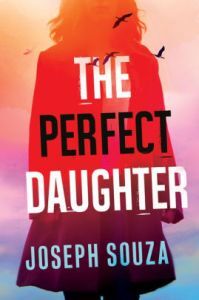
The recent popularity of suburban thrillers in crime fiction begs the question: what exactly is a suburban thriller? More often than not it involves a crime that in some way touches upon a fragile relationship, usually a troubled marriage. The setting is typically the home or possibly the office, and the main character feels somehow trapped in a situation where there seems to be no escape. Oh yes, and a crime is always involved.
Once I discovered the joys of reading a good domestic thriller I was hooked on the genre. When reading one I feel like I’m a fly on the wall watching from behind the scenes, understanding the true dynamics of a couple’s relationship. In fact I liked reading domestic thrillers so much that I decided to write one. This after five horror novels, a book of short stories, a kidnapping mystery and a hardbitten crime novel set in Portland.
My first exposure to a real life domestic thriller happened almost twenty-eight years ago. On October 23rd, 1989, an unusual crime happened in Boston. Reports came in that a black man had forced his way into a couple’s car, robbed them, and then shot the two of them before fleeing on foot. This brutal, senseless crime caused racial tensions to escalate in the city, especially since Charles Stuart’s wife and unborn child ended up dying in the attack. As he lay in the hospital with a gunshot wound to his abdomen, Charles recounted to the police his version of events.
But as police began to dig deeper, Stuart’s lies began to unravel. His brother, Matthew, went to the police and admitted his role in helping Charles pull of this despicable crime. Matthew admitted that the two of them conspired to use the race card in order to hide the true motive for killing Carol Stuart: money!
I remember obsessively following the case in the news, each day learning new information about the murder. It was as if I was reading a riveting mystery or watching a great suspense movie. I wasn’t the only one mesmerized. The entire region seemed eager to find out who had attacked this seemingly happy couple as they returned home from child birthing classes. They made a handsome pair, too. Charles was tall and good looking, and a successful manager of a fur shop on Newbury Street. Carol was a tax attorney who had graduated from BC and was expecting her first child. This couple seemed to have everything going for them. I remember thinking: why do bad things happen to good people.
Back to Charles’ brother. After Matthews admitted his role in the commission of the crime, confirming the police’s suspicions, Charles’s story began to unravel. Of course, like in any good mystery, it was discovered that he had a whole other side to his personality. He’d tried to convince his wife to abort the child so she could keep earning her high salary. But she refused to give up the child. Because of her pregnancy, she’d gotten the upper hand in their marriage, which shifted the balance of power in her favor. Charles was planning to open his own restaurant after he killed her, using the life insurance money as a downpayment. Oh, and like most cases of domestic intrigue, he had a girlfriend on the side.
Unfortunately, Charles Stuart never got the justice he deserved. As soon as he found out his brother had confessed to the police, he drove to the Tobin Bridge, parked his car alongside the rail, and jumped to his death.
The Stuart case has always fascinated me as both a husband, father and a crime writer. I’d recently graduated from Northeastern when the crime happened, majoring in Criminology and Political Science. The idea that a successful husband would even think to kill his beautiful wife and unborn child seemed completely senseless to me. I wanted to understand the warped psychology of an individual who could commit such a heinous crime. I was intrigued by both the crime itself and the use of racial profiling to deceive the police. The crime itself was deeply flawed in execution, and far from complete, and yet it was brilliantly devious in the most psychopathic way. By playing on white Bostonians racial fears, Stuart sought to create the perfect murder.
The Stuart case was my first real introduction to marital bliss gone wrong, and I often still think about it. What is it about marriage that causes spouses to want to kill each, even in jest? Do you ever wonder how certain couples act in the privacy of their home, away from family and friends? Often, but not always, marital disagreements are about money. Or a secret affair. Almost everyone in a relationship experiences these problems at some time in their life. But only a few twisted individuals resort to criminal behavior to resolve the issue in their favor.
Charles Stuart happened to be one of them.
GONE GIRL by Gillian Flynn was the first domestic thriller that truly captured my imagination. Flynn is a brilliant writer with amazing insights on marriage and the roles husbands and wives play in their relationships. Her character, Amy, is a wonderful literary creation and one of the most cunning and despicable villains in the genre. I couldn’t read the book fast enough. And I loved her alternating husband/wife first person POVs. GONE GIRL went on to reinvent the domestic thriller and bring it to the forefront as a new kind of mystery. The clever twists and turns astounded me, and made me realize how ripe this genre was to be explored.
Since GONE GIRL, I’ve gone on to read dozens of books in the domestic thriller genre. Many of them good, others not so. None of them, in my opinion, matched Flynn’s cleverness, razor sharp insight and plot machinations. But they’ve all piqued my interest in one way or another, and got me thinking about the institution of marriage and the complex dynamics that define it.
So I sat down one day to write my own domestic thriller. Oh, I had wild ideas and intriguing plot points kicking around in my head. The words came our fast and furious. Many plot points changed in the editing process. The result? My agent loved it. He told me it was the kind of book he’d been looking for for quite some time. And the best part is that he sold it in a two book deal to an editor who was equally enthusiastic about the manuscript—and the genre.
Not only are domestic thrillers growing in popularity, but many agents on Twitter (#MSWL-more about this in another blog posts for those seeking agents) are actively seeking manuscripts in this genre. It seems that the reading public has an insatiable need for such fiction, and will for the foreseeable future. It’s why I took a career risk and wrote a domestic thriller, and in the process reinvented myself yet again as a writer.
I’ve been happily married for over twenty years and have two kids. The only domestic thrills I encounter these days are mundane at best, such as who will take out the trash, do the laundry or dishes. They say the best advice is write what you know, but I’ll leave that to my imagination.
Joseph Souza is the author of eight works of fiction. He won the Andre Dubus Award, received Honorable Mention for The Al Blanchard Award, in 2013 won the Maine Literary Award and was nominated for the Maine Literary Award. He grew up in Boston and worked as a teacher, cabbie, social worker, truck driver, editor, bouncer, barber, wrestling coach, paralegal and Intelligence Analyst in the DEA (Organized Crime Unit), to name just a few.
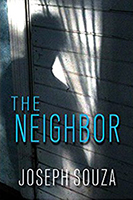
March 10, 2022
DECONSTRUCTION – FRIEND OR FOE
DECONSTRUCTION – FRIEND OR FOE?
Jule Selbo
This post may be a bit all over the place because I’ve been inundated with students’ concerns lately – and spare rumination time keeps leading me to the news on the Ukraine crisis. But, also, I’m feeling wishy-washy about exploring my feelings on the use of the deconstruction in storytelling. Do I enjoy it? Do I feel as if the author (sometimes) becomes too self-aware while appropriating another writer’s material? Does a certain level of deconstruction prevent me from getting fully connected to character and story?
*** I first heard the term in some college English classroom, from the mouth of an over-anxious, dandruffed prof. Sometimes she would say Deconstructivism, sometimes Deconstructist, but mostly she’d say Deconstruction and that’s the term I liked best. She told us it was when a writer referred to, or commented on, the tropes and tricks or over-used story elements of a specific genre while presenting an original narrative.
I immediately think of film examples when I think of deconstructed stories, because, as a screenwriting professor these many years later, I find my students are attracted to the style. They think adding deconstruction elements makes them look more informed, smarter, and coolly cynical (most of them are in their twenties, so they totally embrace the latter). One of the most famous is the 1996 horror/slasher movie, Scream, penned by Kevin Williamson and directed by the late, great Wes Craven. As the horror/slasher movie plays out, the characters verbally analyze and dissect well-known, previous horror flicks. Another favorite of mine is Kiss Kiss Bang Bang (2005), a crime/mystery/noir based on a book by Brett Halliday and written for the screen and directed by Shane Black. This movie does a double deconstruct, looks at crime tropes as well as old myths of “making it in Hollywood”. I’m a fan of both movies – absolutely appreciate the cleverness of the authors playing with the conceits and familiar devices of the genres, but for me, one of the films is more successful that the other. Which one and why?

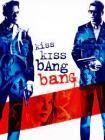
Why/When Did This Topic Fill My Mind?
I finished reading Peter Lovesey’s novel Bloodhounds (1996) about a month ago and enjoyed – but also became wary – as he deconstructed the detective story in multiple ways. Quick synopsis: An odd, quirky riddle-poem is delivered to the local newspaper in Bath (where the Detective Superintendent Diamond book series takes place) to announce a crime is about to be committed. The police misinterpret the riddle-poem and fail to thwart the robbery and the town is distressed that the police force have been proven inept. Diamond is introduced to a small, idiosyncratic group of crime/mystery aficionados (self-named the Bloodhounds) who decide they, because of their extensive reading in the genre, will be able to deduce the identity of the perp. Each of the half-dozen members is a super fan of a specific sub-genre; one defines for the reader the joys of the cozy, one prefers the Sherlock Holmes style, one gets rhapsodic about why the spy thriller is superior and so on. Because of how the first crime was committed (the robbery), and the subsequent crimes (murders) that follow, the group decides they must focus on examining the detective series of John Dickson Carr because of his exceptional use of, and discourse on, the rules of the “locked room” mystery.
***I can hear my nervous, Head and Shoulders shampoo-challenged English prof explaining, in her high, nasal voice: The term ‘locked-room’ is self-explanatory but for those who need it spelled out, it stems from the circumstances of the crime (murder or whatever) taking place in a sealed room, locked from the inside. The catch is that there is no indication of forced-entry, so the reader has to determine how the criminal succeeded in carrying out a crime without leaving a trace. (Website: CrimeReads and a twitchy teacher who gave me a ‘C’.)
I Had To Look Him Up (shame on me)
 John Dickson Carr (1906-1977) – who also published under the pseudonyms Carter Dickson, Carr Dickson and Roger Fairbairn – is on the list of noted authors of the “Golden Age of Detective Fiction”. This is a register of the most widely-read crime mystery writers in the 1920s and 30s, and included Agatha Christie, Dorothy Sayers, Ellery Queen, Rex Stout, Gladys Mitchell, Anne Hocking, Earl Stanley Gardner and more. Howard Haycraft (historian and editor focusing on the detective genre, and known for his book of essays Murder for Pleasure (1941), coined the “Golden Age” moniker. It refers to the raft of soft-boiled detective stories (usually put into the cozy sub-genre) written between WW I and WWII.
John Dickson Carr (1906-1977) – who also published under the pseudonyms Carter Dickson, Carr Dickson and Roger Fairbairn – is on the list of noted authors of the “Golden Age of Detective Fiction”. This is a register of the most widely-read crime mystery writers in the 1920s and 30s, and included Agatha Christie, Dorothy Sayers, Ellery Queen, Rex Stout, Gladys Mitchell, Anne Hocking, Earl Stanley Gardner and more. Howard Haycraft (historian and editor focusing on the detective genre, and known for his book of essays Murder for Pleasure (1941), coined the “Golden Age” moniker. It refers to the raft of soft-boiled detective stories (usually put into the cozy sub-genre) written between WW I and WWII.
**After WWII, according to the website “Novel Suspects”, readers became tired of “clean, neat, intellectually challenging” puzzle-solving crime fiction, they wanted “more real and physical” stories to go along with recent experiences with the horrors of war, displacement of lives and fear of “the other”; they wanted stories that examined man’s inclinations towards evil and corruption. So, after WW II, the hard-boiled detective/noir fiction gained popularity… sorry, veering off the path…
Back to Carr and Lovesey’s Approaches:
John Dickson Carr, the novelist, was analytical in his approach. He wanted his stories to hold up as authentic, well-executed puzzles – so that when all was revealed, no reader could find holes in the logic or action. He was a stickler, a man who studied the genre and held himself to a high mark.
 Lovesey is also a dedicated student of detective fiction. In Bloodhounds, he reveals that his protagonist, Detective Superintendent Diamond, does not appreciate crime fiction. Diamond is more of a grouchy plodder, likes “old-fashioned” detecting – sweat and smarts – definitely a man who would not be familiar with Carr’s work. The local Bloodhound group informs him of Carr’s love of complex, plot-driven “puzzlers” and especially the “locked room” mysteries because the case at hand involves a dead body found in a boat (one used as a residence and parked on the river in Bath). The boat is locked from the outside with a one-of-a-kind padlock with only one key issued (and the key has been constantly in the possession of one of Bloodhounds – before, during and after the crime). All other possible entries to the boat’s interior are locked from the inside or nailed shut, no murder weapon is evident and there are no clues to anyone else’s presence (fingerprints, shoe prints, hair etc.). Diamond (being a dogged detective) is soon frustrated, so he starts to read Carr with the hopes that the man’s novels, as well as Carr’s obsession with locked-room puzzlers, and the added insights of the Bloodhound group who have put Carr on a pedestal, will shine light on the crimes that are dampening the trust of the people in small town Bath, England.
Lovesey is also a dedicated student of detective fiction. In Bloodhounds, he reveals that his protagonist, Detective Superintendent Diamond, does not appreciate crime fiction. Diamond is more of a grouchy plodder, likes “old-fashioned” detecting – sweat and smarts – definitely a man who would not be familiar with Carr’s work. The local Bloodhound group informs him of Carr’s love of complex, plot-driven “puzzlers” and especially the “locked room” mysteries because the case at hand involves a dead body found in a boat (one used as a residence and parked on the river in Bath). The boat is locked from the outside with a one-of-a-kind padlock with only one key issued (and the key has been constantly in the possession of one of Bloodhounds – before, during and after the crime). All other possible entries to the boat’s interior are locked from the inside or nailed shut, no murder weapon is evident and there are no clues to anyone else’s presence (fingerprints, shoe prints, hair etc.). Diamond (being a dogged detective) is soon frustrated, so he starts to read Carr with the hopes that the man’s novels, as well as Carr’s obsession with locked-room puzzlers, and the added insights of the Bloodhound group who have put Carr on a pedestal, will shine light on the crimes that are dampening the trust of the people in small town Bath, England.
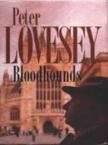
I won’t go more into the plot, but Detective Diamond reads one of Carr’s most famous novels, The Hollow Man (1935).
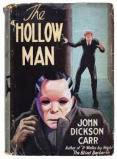
In it, Carr’s own investigator, Dr. Gideon Fell, is facing a “locked-room mystery”. Carr deconstructs the dilemma, even has Fell give a lecture on the do’s and don’ts of solving “locked room” mysteries, including an analysis of Edgar Allan Poe’s short story The Murders at the Rue Morgue (1841, maybe the first acclaimed “locked-room” mystery?) while actively trying to solve the crime currently facing him.
Is this nod by Carr to Poe (and a few others who have written locked-room mysteries) necessary? Is it good manners? Are authors attempting to make readers aware that there may be a limited number of plots and ways to thwart the investigator? Are they letting the audience know that reader and writer are in this dilemma together, both wanting to find “fresh takes” and surprises in old tropes? Are authors assuring their readers that writers also have a deep knowledge of crime/mystery history?
Big Question: Did I Enjoy It?
Did Lovesey’s use of deconstruction and his veering off the “A” story to give academic-ish information deter me from enjoying the book? Not sure. Maybe a little. It stalled my investment in the “whodunit” engine, one of most fun elements of a crime-mystery. At the same time, did I appreciate his giving Carr some kudos? Yes.

My musings also went in another direction as I thought further the subject (sorry). Why did Kevin Williamson want to point out certain cliches and over-used plot points and skewed logic of previous horror/slasher movies? In a wide array of interviews, he makes it clear he didn’t set out to write a satire (think of 1980’s Airplane, a spoof of the classic 1970 Airport and other movie parodies). In fact, in pre-production talks with director, Williamson stressed that he hoped Craven would attack his script as a “drama” and with “true horror” directorial decisions. Craven (reportedly) had originally planned a lighter, more comedic approach, but Williamson convinced him. Williamson wanted the characters in the movie to be facing life and death decisions about their lives, their futures and their identities. He insisted that the fact that the teenagers were horror/slasher film buffs could add to the scariness. Williamson wanted to highlight the fact that even if the targets knew they are being targeted and knew not to run up the stairs to the attic to hide – humans (especially when panicked) made mistakes – and that’s when psychopaths can triumph. While watching Scream, I worried for the characters, and I was terrified of the killer. The deconstruction did add to my intellectual enjoyment, and my visceral reaction. For me, the movie asked: “Have these young villains been so influenced by horror/slasher movies to think it’s cool to be evil? Have these kinds of movies contributed to their loss of humanity?” For me, it added another layer. Just a bit of dialogue from the film:
STU: Then why’d the police let him go?
RANDY: Because, obviously they don’t watch enough movies. This is standard horror movie stuff. PROM NIGHT revisited.
Randy moves down the aisle, re-shelving videos.
STU: Why would he want to kill his own girlfriend?
RANDY: There’s always some stupid bullshit reason to kill your girlfriend. That’s the beauty of it all. Simplicity. Besides, if it is too complicated, you lose your target audience.
Williamson, SCREAM, 1986

Kiss Kiss Bang Bang, my other favorite, is, as I previously mentioned, deconstruction on top of deconstruction. The film website, AV Club, published an article “Lights. Camera. Deconstruction.” (Six writers contributed to the article and I don’t know who wrote what, so I won’t list them all.) There’s a quote from the piece that hit me: “Black pulls off a remarkable act of cinematic cannibalism: By the time it’s over, Kiss Kiss Bang Bang has eaten itself alive.” I have to agree. In the film script, Black makes up a crime fiction writer, Johnny Gossamer, and allows quite a few characters to be knowledgeable fans of Gossamer mystery plots. Some of the deductive steps taken by the amateur investigators (trying to stay alive) are inspired by the plots of the novels. It’s illuminated for fun and to facilitate plot shortcuts (I assume) and to share Black’s appreciation of pulp-ish detective potboilers. Black is also taking a deconstructive jab at Hollywood movie making (Black wrote the hit Lethal Weapon (1987), the bomb Last Boy Scout (1991), and other hits and misses, so he knows the ups and downs of Hollywood).

I love this movie, but did I connect with the characters and situation? Not really – it was too arch, too self-aware and “too much deconstruction” for me. And as I write this, I’m thinking this feeling might be why, ultimately, I did not get involved (as I did in Scream) in rooting for the characters and their goals – why the movie doesn’t reach the highest mark for me. The “too much” aspect pushed the movie closer to satire and thus lacked an emotional, universal message. For me, the movie remains a delicious piece of cotton candy – pretty, fun – and quickly consumed and forgotten.
I’ll still watch Kiss Kiss Bang Bang once a year and laugh and catcall at the screen, even though it doesn’t hold that bit of extra thematic resonance. And I’ll re-watch Scream and appreciate its cleverness – and its ability to comment on humanity.
That’s it. Thanks to the beautiful Maine winter snowfall happening right now as I finish this up – and that blogs are for musings and not full-blown, provable assertions. More about the writers mentioned:
John Dickson Carr wrote over 70 novels and won many awards, including the Mystery Writers of America, the Edgar Allan Poe Award, and the Ellery Queen Prize for short stories). Peter Lovesey (born in 1936 and still going strong) has written more than thirty detective novels and lots of short stories. The most recent was released in 2021. How did he move from being a poor sportswriter to crime novelist? He saw an advertisement for a mystery writing contest. The prize was 1,000 pounds. Lovesey wrote, for the contest, a crime novel in four months. He won, and stayed in the genre. Some of his awards: the Edgar Grand Master, the Anthony Award, the CWA Cartier Diamond, the Gold and the Silver Dagger Awards, the Leo Harris Award… it goes on and on.
Kevin Williamson wrote Scream, Scream 2 and Scream 4. He also wrote I Know What You Did Last Summer (1997 – another story that uses deconstructivism) and Teaching Mrs. Tingle (1999). His television credits are vast, he created as well as wrote many scripts for the television series including Dawson’s Creek, Vampire Diaries, Time After Time, Scream (the TV series), Glory Days and Wasteland. Shane Black (according to IMDB) has two new movies about to go into production.
The list of films that use deconstructivism is quite long, and I think I may know a good number of them. But I’d be interested if anyone’s got any crime-mystery novels they recommend that use this device. Always up for a fun read.
March 8, 2022
To Sleep, Perchance to Dream
At this point in the seemingly endless winter, filled with brutal temps and even more brutal current events, I am very envious of those creatures who can hibernate and skip it all. Imagine—months of sleep, curled up in a cozy ball well beneath the snow, unaware of the evil above.
Alas, lately I cannot seem to sleep more than two hours or three at a stretch, and I’m very aware of the evil. Doomscrolling on my phone during the night when I wake is my downfall. To distract myself, I’ve been doing the New York Times Spelling Bee at 3 AM when a new puzzle posts. I do the Wordle and the Mini-Crossword then, too. After an hour of simultaneously stimulating and soothing my brain, I usually wind up going back to bed.
“First sleep” goes back at least as far as a literary reference to it in The Odyssey. People would fall asleep once it got dark and wake up around midnight. And then—pretty much anything could happen during “the watching.” People hung out with their neighbors, had sex (maybe sex with their neighbors), did household chores, prayed, etc. The evolutionary theory behind this is that you’d have to wake up in your cave and add more wood to the fire so that you wouldn’t freeze to death, and guard against night-time predators. (The person below had better wake up quick.) After a few productive hours, it would be time to go back to bed again—”second sleep.” Or, as the scientists call this nighttime routine, bimodal, segmented, broken, or biphasic sleep. At this point I believe I’m in a tri or quadphasic pattern.

My sleep and writing schedules have gone haywire. When I worked in an elementary school, I had to sign in at 7:30 AM. Consequently, I was up around 4 and wrote before I left the house. We moved, and I became a high school library clerk. I ran the after-school program, and my hours were 10:30 to 5. Out of habit, I still woke up at the same ungodly hour to write, and I’d get to school with my head half in the clouds, feeling like I’d already put in a full workday.
I was pretty tired after both jobs, and hardly ever sat down at the computer to do anything serious in the evening. At most, I could edit and tweak, but rarely did I produce sparkly fresh words. I thought of myself as a “morning person,” feeling whatever creativity I possessed peaked early in the day.
Now that I’m retired and can spend all day writing, do I? The answer is absolutely not, LOL. I sometimes sleep past nine—or later—if I’ve been up several times in the middle of the night. Noon might find me still in pajamas. It takes me ages to be sufficiently alert to open up my manuscript. Things get written—or don’t—on and off all afternoon and into the early evening as I’m feeling more human.
This lackadaisical situation would horrify my parents, who never, ever let me sleep in. Why would they? They were early birds and I was raised to follow suit. My father worked in the post office and left the house by 4 AM. My Viennese mother was an exacting hausfrau. She sent our excitable fox terrier into my bedroom to lick me awake if she thought I was lingering too long in bed. She hung laundry outside at the crack of dawn, and I can remember the dastardly skritch of clothespins on the clothesline hooked up right outside my window. The vacuum whined before the sun rose. For that matter, in the winter I’d have to walk the mile to school in the dark, sometimes with a cello. Pity past me.
Now, I only get up early if I have to make a flight or when my grandkids visit. Five-year-old Josephine likes to help me with the Spelling Bee and knows how to operate the Keurig. She picks my mug and stirs the sugar in. I ease very slowly into the day with my cup of coffee, and wonder what ever happened to the early bird who got the worm.
Who wants to eat worms anyway?
Everyone from Stephen King to Anne Lamott suggests a writer should write every day around the same time, training themselves to “wake up.” I’m afraid I am lying down on the job.
Sleep tips from the Mayo Clinic are below. I think they could almost double as writing advice!
Stick to a sleep schedule. Set aside no more than eight hours for sleep. The recommended amount of sleep for a healthy adult is at least seven hours
Pay attention to what you eat and drink. Don’t go to bed hungry or stuffed. In particular, avoid heavy or large meals within a couple of hours of bedtime.
Create a restful environment. Create a room that’s ideal for sleeping. Often, this means cool, dark and quiet. Exposure to light might make it more challenging to fall asleep.
Limit daytime naps. Long daytime naps can interfere with nighttime sleep.
Include physical activity in your daily routine. Regular physical activity can promote better sleep. Avoid being active too close to bedtime, however.
Manage worries. Try to resolve your worries or concerns before bedtime. Jot down what’s on your mind and then set it aside for tomorrow. (Ed. Note: ha ha ha ha)
Are you a good sleeper? When do you do your best work?
Maggie Robinson is the author of the Lady Adelaide Mysteries and four historical romance series. To learn more, please visit her website.
March 6, 2022
My Dance of Fame, Again
I realize St. Patrick’s Day’s still ten days away, but my mother— a woman who celebrated her Irish heritage for the entire month of March—has been on my mind lately.
Unbothered by the gray skies, the yo-yo temperatures and the mud, on each of the month’s 31 days Irene Kane Buchanan cooked and sang and wore clothes in every shade of green found on the springtime fields of Kerry. In honor of what would have been her 100th St. Patrick’s Day, I’m re-running my post from 2016, the last time she was with us, jigging her way through the month of March.
**
If not for St. Patrick’s Day, March would have little to recommend it.
But in my family, the holiday is a big deal. My mother and her siblings were born in America but my grandparents and older relatives had brogues as thick as spring fog. Determined to hang on to their culture, they maintained certain traditions including teaching children (especially little girls) to step dance.
My older sister and I took lessons from a woman named Bernadette, who was off the boat from County Kerry. Irish step dancing involves complicated footwork. In her Saturday morning classes, Bernadette called out cues I remember to this day. Heel, toe, heel, toe, heel, toe, hop one-two-three-four. A jig or a reel played in the background, helping little feet keep the beat.
The more difficult skill for me was to keep my hands at my sides, fingertips pointing to the floor. That is a defining aspect of traditional Irish step dance, intended to direct attention to the intricate steps. My little sister—who when I first started would have been two to my four—was too young to dance but old enough to keep me in line. Kate sat in the front row during practice sessions and called me out when my arms flew out from my sides. “Hands!” she’d chirp. “Hands!”
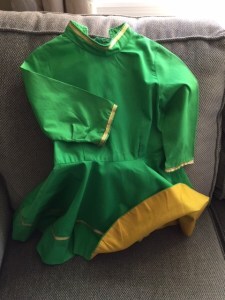
My Mom-made Irish step dancing dress.
Thoughout the year, but especially in March, Bernadette’s troupe danced at various events around town. Our mothers made our outfits, green dresses with gold fabric on the underside of the skirt, designed to show when we kicked our tap-shoed feet. Somehow I have hung on to one of mine all these years. There it is at right, in all its tiny glory.
Our shoes were tied with Kelly green ribbons. On our legs we wore black tights. A back sash was pinned from left shoulder to right hip.
Such was the costume we wore the night a dozen or so of us were to be the entertainment at the 1962 St. Patrick’s Day party sponsored by the Irish-American Club in my Massachusetts hometown.
We were the warm-up act for Ted Kennedy, who had just announced his first candidacy for United States Senate. His brother was president, of course, which made this gig a Very Big Deal to the older girls in the troupe. At the end of our performance we’d been instructed by Bernadette to skip down the stairs on the side of the stage—tallest to shortest—and shake the hand of the candidate, who was sitting in the front row. The oldest girl—my second cousin—had a small token of some sort to present to him as a gift from us.
I was four years old—too young to be nervous about anything but keeping my hands by my sides—but backstage jitters infected the big girls. We’d be dancing for the handsome president’s handsome younger brother, not to mention a hall packed with most of the Irish population of our hometown. The young teenagers were wound up. Moments before we went on stage one of them sidled over to me and said the plan had changed, I was now going to lead the troupe off the stage and be the one to hand the gift to Mr. Kennedy.
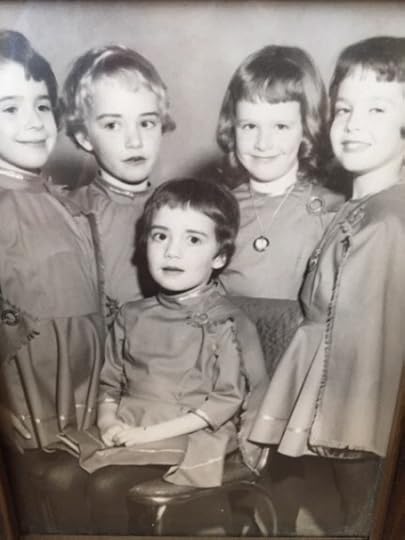
I suspect this photo was taken a year or so after the famous Irish-American Club party. I am seated. My sister SuEllen is the fair-haired girl second from left.
So out we went and dance we did and after we took our bow I led the way off the stage. Whenever my mother told this story she’d put her hand over her heart and exclaim that her relief at our fine performance gave way to dismay that her headstrong little Brenda was leading the march to Ted Kennedy instead of bringing up the rear. My memory is that he was very nice and people took pictures of all of us, then my older sister and I were whisked home because by then it was long past our bedtime.
The next day a telegram arrived at our house (yep, an actual telegram.) It read: My brother tells me you are the best step-dancers ever. STOP. Congratulations! STOP. It was signed JFK. Now that impressed me. I may not have quite grasped who the man in the front row of the audience was, but I knew JFK was President of the United States.
I was probably 12 before I learned that the telegram had been sent by my uncle, John Francis Kane.
Happy St. Patrick’s Day to all of the readers of this blog. My gift to you is this link to the fabulous McNiff Irish Dancers, performing in 1958. These dancers were the real deal. They performed on the Ed Sullivan show, not merely at hometown St. Patrick’s Day dinners. But we danced this same traditional style. Note that except for the parts when the piece called for them to clasp hands, the dancers’ fingers are pointed right at their tap shoes.
And this time around, here’s a more modern video, this time of a troupe of little girls, lined up oldest to youngest, as were we.
Brenda Buchanan brings years of experience as a journalist and a lawyer to her crime fiction. She has published three books featuring Joe Gale, a newspaper reporter who covers the crime and courts beat. Her short story, MEANS, MOTIVE, AND OPPORTUNITY was included in BLOODROOT: BEST NEW ENGLAND CRIME STORIES 2021. Brenda is hard at work on new projects. FMI, go to http://brendabuchananwrites.com
March 4, 2022
Weekend Update: March 5-6, 2022
Next week at Maine Crime Writers there will be posts by Brenda Buchanan (Monday), Maggie Robinson (Tuesday), Jule Selbo (Thursday) and Joe Souza (Friday).
In the news department, here’s what’s happening with some of us who blog regularly at Maine Crime Writers:
from Kathy Lynn Emerson: The third volume of The Face Down Collection is now available as an ebook. This one includes three full-length historical mysteries and nine short stories featuring Susanna, Lady Appleton, sixteenth-century gentlewoman, herbalist, and sleuth, and her friends.
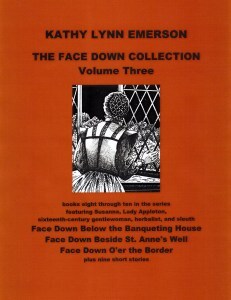
Here’s a link to the page at my website that gives more details and links to buy all three volumes. http://www.kathylynnemerson.com/mystery.htm
An invitation to readers of this blog: Do you have news relating to Maine, Crime, or Writing? We’d love to hear from you. Just comment below to share.
And a reminder: If your library, school, or organization is looking for a speaker, we are often available to talk about the writing process, research, where we get our ideas, and other mysteries of the business. We also do programs on Zoom. Contact Kate Flora
Cabin Fever, Supply Chain Woes and The ASS
I knew it was time to go on a road trip when Mother threw her hair dryer through our big screen TV. Granted she’d taken a hammer to the radio in the kitchen the day before when her favorite program was interrupted by yet another ad for an extended auto warranty, but neither of us particularly liked that radio. After all, it was a 35th anniversary gift from her mother who found it at a lawn sale in East Madison. Who the hell decided a hot pink AM/FM/short wave radio deserved to come with a three-D image of Dolly Parton, anyhow?

Back to the hair dryer incident. February is a rough month for older Mainers unless you’re a tough old buzzard like Sandy Emerson who’d ski off the top of Mount Katahdin if given the chance. The rest of us mutter about heating oil prices, growl at those flatlanders who can’t survive a single aisle at Hannafords without consulting Brad or Muffy via cell phone regarding whether they should buy the 5 or ten ounce organic potato chips. Then there’s the weather, colder than alleged witch parts, wind with an edge you’d appreciate on an ax, and it can’t seem to make up its mind whether to snow or drop enough freezing rain to make walking impossible without tank treads on your boots.
Well, about the time we finished pulling glass fragments out of the couch and Mother’s favorite rocking chair, I looked at her and said, “Tomorrow, we’re going up to Farmington.”

She had the grace to give me an apologetic look before saying, “It’s those damn pledge drives. I give three times a year and them asking for money doesn’t get to me in warmer weather, but dammit, what I need right now is a ‘talk me off this frigging ledge’ drive right now.”
First thing on Saturday, we made certain we had our mugs full of industrial strength coffee, necessities stowed in the trunk and a full tank of overpriced gas. When we passed the Mercer Bog Preserve, I noticed a small patch of cleared ice, but nobody was skating. “Remember how Ron would borrow his dad’s tractor and clear a half mile oval on Seven Tree pond when we were in high school? We’d hide stolen beer in the snow and skate until we froze to death before warming by a tire fire near the shore? Life was a hell of a lot simpler and people more complex. Seems like those things have gotten flipped somehow.”
Traffic picked up as we got near the intersection of Routes 2 and 4. It was nice to see logging trucks with full loads for a change, something cabin fever kept us from enjoying down home.
After parking, Mother strode off toward her favorite shop, the Spider Silk Emporium. She was running low on their special super strength lightweight thread, something she deemed necessary for sewing her quilt scraps into parachutes for the gray squirrels that frequented our backyard. I’d never seen one fall, or use one of her creations, but I wasn’t about to tell her. After all, we all need our harmless obsessions once we get a bit long in the tooth.
I grabbed my special shopping bag, locked the car, and headed toward the ASS. People who frequented the store seemed to be equally split in terms of what they called it. Those who were more skittish about dicey language, called it by its full name, the Adjective Supply Store. Others like me, just called it The ASS.
Sherm Farquar looked up from where he was reading a copy of Fifty Shades of Gray in Korean. “I ain’t seen you in three dogs’ ages. How ya been?”

I was about to answer him when I realized how bare the shelves were. “Jesus on a pogo stick, Sherm, what the hell happened?”
“Where should I begin?” he sighed. “I started seeing a run on some of the more strident adjectives around the time the 2016 elections heated up. Once that was over, the run slowed briefly, but as soon as the mid-term election, and then the start of the pandemic arrived, all hell broke loose. Anything I had in stock that could be construed as invective, inflammatory, or divisive flew out the door. Heck, the UPS and FedEx drivers were here sometimes as often as three times a day. All the other business owners were convinced I was selling drugs. They even had the ATF people sniffing around here twice. It was good for my bottom line, but not for my mental health.”
“Sounds scary,” I said, searching the store to see if there were any adjectives I could use, but coming up empty.
“Wicked so, Sherm said. “The stress got so bad I took it home. Thankfully, my wife is a very adaptive sort. She found her relief valve out at the Bouncing Mustache Cafe in Madrid. She joined a topless drumming circle and hatchet throwing group that meets every Wednesday night. She’s been a different person since joining. Wish I could find something similar for me. Anyhow, this word grabbing hasn’t been limited to adjectives. I got a call from Bix Mercanter who owns the PUS over in Newport, wanting to know whether I was still in business.”
“PUS, that’s a new one to me,” I said.
“Oh, it’s the Pronouns Unlimited Store. When the gender spectrum expanded, Bix had a run on stock that was greater than mine. All he has left are you and it, but nobody wants them these days. His suppliers are quoting a twelve to fourteen month backlog before they can ship anything, so he’s closed up and spends most days ice fishing.”
“You in a similar situation?” I asked.
“I was until I realized times were changing in ways a lot of merchants and consumers haven’t realized yet. Words won’t go out of style completely, but the future is in emoticons and text inspired abbreviations like ICYMI. I discovered a company in Canada that has taken GMO to a whole new level. They sell seeds that produce super stick emoticons and abbreviations, so I ordered some.” He handed me a paper shopping bag. “See what you think.”
The samples inside were amazing. I even tested one fluorescent pink one that said LMAO. Sherm was right, I had all I could do to pull it off a test board he kept behind the counter.
“These would be perfect to slap over bumper stickers that piss you off,” I said. You selling the seeds yet?”
Sherm nodded and picked out half a dozen packages the thought would appeal to me. “Yo know, you might try what some of the younger writers are doing these days, make up your own adjectives. Half the people reading these days won’t know the difference when you get the hang of it.”
“Thanks, I’ll think on it when I get home,” I said as I went out the door.
Twenty minutes later, Mother and I were packing our purchases securely in the flexible netting we keep in the trunk.
“Good time to play over and under while taking the scenic route home,” she said as she handed me my crash helmet. “You got a number in mind?”
“Fifteen,” I replied while fastening mine securely. You want over, or under?”
“Given the weather and my mood, I’ll take over,” she said as she buckled her seat belt.
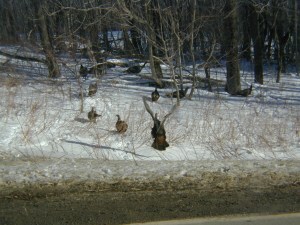
“I got a feeling you’ll win.” I drove off toward the back way home. Late February was always a perfect time to play the frost heave lottery.
March 3, 2022
Sometimes There’s a Need for Whimsy
Kate Flora: We’ve just completed our three-day marathon drive to Florida, where we will spend the next month walking on the beach, going on bike rides, and mostly doing what we always do–writing–in a new venue. Yesterday we visited with relatives whose TV was always on, and the constant news and videos of the war in Ukraine were so deeply depressing and worrying that it was hard to even notice that outside, birds were chirping and the sun was shining and a pleasing breeze was rustling the palm fronds.
spend the next month walking on the beach, going on bike rides, and mostly doing what we always do–writing–in a new venue. Yesterday we visited with relatives whose TV was always on, and the constant news and videos of the war in Ukraine were so deeply depressing and worrying that it was hard to even notice that outside, birds were chirping and the sun was shining and a pleasing breeze was rustling the palm fronds.
I was thinking about an antidote to such news, not to hide from it but to balance it, and how we all need some leavening after two years of the pandemic. I’m still mostly masked, and still startled when I see the lower halves of people’s faces. Those losses, of social connection and even of smiles, make me think about going forward. .After 70 years of dressing carefully (mostly in black), following the rules, eating my fruits and vegetables, and trying to be a good citizen, I want a bit more color in my world. I want to laugh more. I want more amusement. That leads me to whimsy.
I’ve written here before about the importance, for writers, of slowing down and looking around and seeing the world around us. One of the good things that world has to offer, if we’re willing to notice, are small, amusing things that can lighten our days.
I am always looking for signs, not signs from the universe but signs on walls and on posts that make me smile.
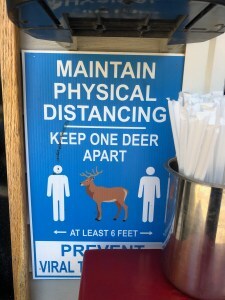
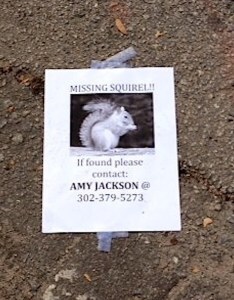
flyer on the street



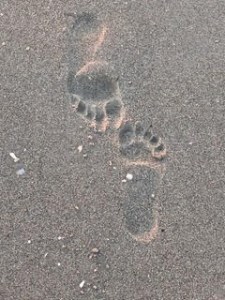
Sometimes whimsy arises not from what we see but what we do. These five authors in chef’s hats, Katy Munger, Taffy Cannon Gary Phillips, Lise McClendon, and me, became the imaginary writer, Thalia Filbert, for our group novel about a serial killer of famous TV chefs, Beat, Slay, Love.
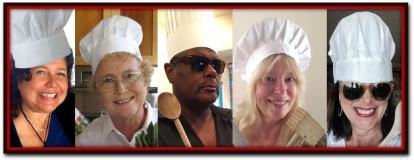
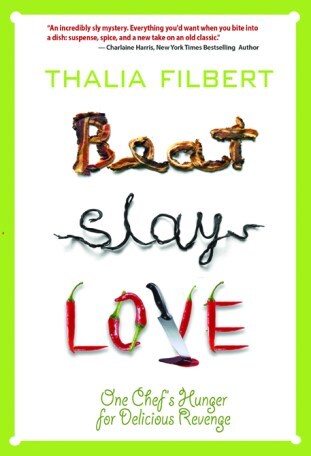
Bacon, squid ink pasta, and hot peppers!
More whimsy came into play when I was invited to submit a story to The Obama Inheritance. I am always grateful for the opportunity to be nudged out of my usual writing slot and challenged to write something new.
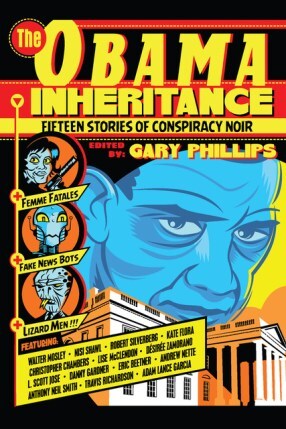
So, in observation, and in writing, sometimes we need a bit of whimsy to offset the troubled state of reality. And yes, this from someone who writes very dark, very gritty books.
Do you seek out whimsy? Does it find you?
February 28, 2022
When I’m Wrong, I’m Wrong
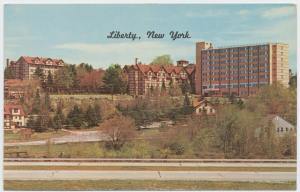
Grossinger’s Resort
Kaitlyn Dunnett/Kathy Lynn Emerson here. As regular readers of this blog know, I grew up in Sullivan County, New York, in the foothills of the Catskills, an area also known as the Borsht Belt. Until the late 1960s, Borsht Belt hotels and resorts catered to Jewish families from New York City and provided venues for dozens of standup comics who later went on to national and international fame. If you’re watching The Marvelous Mrs. Maisel you can get a pretty accurate glimpse of what that era was like in episodes in the second season. Sadly, as the ease of air travel increased, the Catskills declined in popularity. None of those once famous vacation spots have survived. The last of the ruins at the best know resort, Grossinger’s, were demolished only a couple of years ago, incidentally providing me with a place to hide the body in the third book in my Deadly Edits series, A Fatal Fiction.
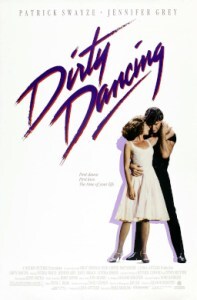 But I digress. The real reason for today’s blog topic is to admit that I was wrong about another depiction of summer in the Borsht Belt. For years—1987, when it first came out, until a few weeks ago—I steadfastly refused to watch the movie Dirty Dancing (as does my sleuth, Mikki Lincoln) because the bits and pieces of it I’d seen didn’t look at all like my memories of that time (1963, when I was 15) and place. I was a townie, not a tourist, and I never worked a summer job in one of the hotels. I’m pretty sure the fact that I was raised Presbyterian isn’t as significant. I come from a long line of farm/boardinghouse-keepers, so I wasn’t a stranger to tourism. In fact, every summer until my grandfather came to live with us when I was ten, we rented out the spare room to a Mr. Lazar from New York City.
But I digress. The real reason for today’s blog topic is to admit that I was wrong about another depiction of summer in the Borsht Belt. For years—1987, when it first came out, until a few weeks ago—I steadfastly refused to watch the movie Dirty Dancing (as does my sleuth, Mikki Lincoln) because the bits and pieces of it I’d seen didn’t look at all like my memories of that time (1963, when I was 15) and place. I was a townie, not a tourist, and I never worked a summer job in one of the hotels. I’m pretty sure the fact that I was raised Presbyterian isn’t as significant. I come from a long line of farm/boardinghouse-keepers, so I wasn’t a stranger to tourism. In fact, every summer until my grandfather came to live with us when I was ten, we rented out the spare room to a Mr. Lazar from New York City.
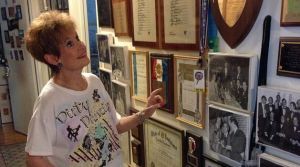 In the course of my research for the Deadly Edits series, I found myself becoming increasingly curious about the screenplay because of a woman named Jackie Horner. I never met her, but she was the source of many of the details in the movie because she was a dance instructor at Grossinger’s for decades. You can read more about her here. Then, after a recent exchange on Facebook between two of my high school classmates, both big fans of Dirty Dancing, I gave in to temptation and shelled out a whopping $1.99 to rent the movie on Amazon Prime.
In the course of my research for the Deadly Edits series, I found myself becoming increasingly curious about the screenplay because of a woman named Jackie Horner. I never met her, but she was the source of many of the details in the movie because she was a dance instructor at Grossinger’s for decades. You can read more about her here. Then, after a recent exchange on Facebook between two of my high school classmates, both big fans of Dirty Dancing, I gave in to temptation and shelled out a whopping $1.99 to rent the movie on Amazon Prime.
 At the ripe old age of 74, after watching Dirty Dancing for the first time, I finally get why so many people love the film. The acting and dancing are superb. The script is extremely well written. And within the closed society of the resort hotel, the “feel” of the mid-1960s is pretty darn accurate. To be political for a moment—people need to remember how horrible the consequences could be before abortion was legalized.
At the ripe old age of 74, after watching Dirty Dancing for the first time, I finally get why so many people love the film. The acting and dancing are superb. The script is extremely well written. And within the closed society of the resort hotel, the “feel” of the mid-1960s is pretty darn accurate. To be political for a moment—people need to remember how horrible the consequences could be before abortion was legalized.
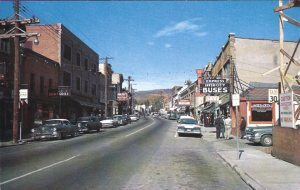
Liberty in the 1960s
I do still have one small quibble. I’m sure there were sound financial reasons for the decision to film in South Carolina and Virginia, but I can’t help but wish they’d used real Catskills locations. The brief scene of driving up from The City looked pretty close to part of Rt. 17, but when it came to the hotel used as “Kellermans” the architecture just didn’t match any Borscht Belt structure I’m familiar with. And the staff cabins looked awfully luxurious. I suspect the Mrs. Maisel episode was closer to reality, but since I have no firsthand knowledge, I can’t say for sure. What I do know is that Grossinger’s, the inspiration for Kellerman’s, was still open when the movie was filmed, so it’s a pity the producers didn’t go to the source. And, of course, if they had, since Grossinger’s was located in my hometown of Liberty, New York, perhaps the characters might have been shown passing through downtown on their way to practice dancing in the woods.

Kathy Lynn Emerson/Kaitlyn Dunnett has had sixty-four books traditionally published and has self published others, including several children’s books. She won the Agatha Award and was an Anthony and Macavity finalist for best mystery nonfiction of 2008 for How to Write Killer Historical Mysteries and was an Agatha Award finalist in 2015 in the best mystery short story category. She was the Malice Domestic Guest of Honor in 2014. Her most recent publications are The Valentine Veilleux Mysteries (a collection of three short stories and a novella, written as Kaitlyn) and I Kill People for a Living: A Collection of Essays by a Writer of Cozy Mysteries (written as Kathy). She maintains websites at www.KaitlynDunnett.com and www.KathyLynnEmerson.com. A third, at A Who’s Who of Tudor Women, is the gateway to over 2300 mini-biographies of sixteenth-century Englishwomen.
February 27, 2022
Trundle On
Been a busy couple of weeks out here on Trout Brook. We had to chip our way out of three inches of frozen water when we returned from our thrice-delayed flights, coming and going from God’s Waiting Room, Florida. Key West bucks the geriatric definition, though, with its vibrant sense of color and life. My favorite memory of our two days there was a sixtyish gent, bald as an egg, in a white lace onesie and knee-high white leather boots, riding his bike down Duval Street, angel wings flapping in the soft breeze. Jimmy Buffett would have written an opera for him. 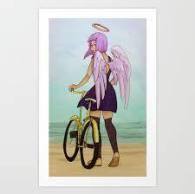 The break was good for both of us, though coming home to a doorstep encased in frozen snow at one in the morning brought us back to reality quick. I know, no whining.
The break was good for both of us, though coming home to a doorstep encased in frozen snow at one in the morning brought us back to reality quick. I know, no whining.
This morning, at five above, I looked out my office window in time to see a fox trotting across the back forty, proud and fearless of human interference. I have to think he was happy about the fact he’d caught his supper—the bushy tail of a gray squirrel hung from the side of his mouth as he loped across the frozen snow.  In the sun, this didn’t seem like a tragedy, especially after what the squirrels inflicted on my kale last year. I can’t speak for the squirrel’s frame of mind.
In the sun, this didn’t seem like a tragedy, especially after what the squirrels inflicted on my kale last year. I can’t speak for the squirrel’s frame of mind.
It reminded me of another morning last winter when I watched a red-tailed hawk circle the big maple in the back yard, maybe six or eight feet off the ground. The raptors usually hunt from height, so I was surprised to see him flying so low, until a panicky squirrel, clinging desperately to the bark, circled the maple, trying to avoid the hawk’s attention. A flutter of wings on the back side of the tree, a cry I could hear even through my thermopane windows, and the squirrel and hawk descended to a flurry on the ground. When I went out to investigate later, I found bloody snow, tufts of gray hair, and not much else. So there are predators and prey. I suppose we’d all rather identify with the former.
My more or less constant companion at the writing desk this winter has been a lady bug. As you may know, they sneak into the warm house in the fall and look for places to hibernate. It’s not uncommon on a warmish winter day to see swarms on your windows, if your house isn’t tight. This is the only one I hosted this winter, and I’m not sure how she got caught in the room.

I did, every morning, brush her carefully off the words I’d written the day before so I could start my work. I dubbed her Louie and when I would look out the window to ponder, she would entertain me with double back flips and buzzing wings and walking stiff legged across my deathless prose. Was I kinder to her because she was so small? Or because I couldn’t eat her?
Not sure what any of this means, except as a reminder that life can feel nasty, brutish, and short, especially in a Maine winter. We can choose to feel as if we’re being eaten by the cold and the dark. Or we can hold onto the image of Louie, lying on her back, flapping madly to get herself back upright, onto her legs. To trundle on. Trundle on, folks. Trundle on—the sun is returning.
February 25, 2022
Weekend Update: February 26-27,2022
 Next week at Maine Crime Writers there will be posts by Dick Cass (Monday), Kathy Lynn Emerson/Kaitlyn Dunnett (Tuesday), Kate Flora (Thursday) and John Clark (Friday).
Next week at Maine Crime Writers there will be posts by Dick Cass (Monday), Kathy Lynn Emerson/Kaitlyn Dunnett (Tuesday), Kate Flora (Thursday) and John Clark (Friday).
In the news department, here’s what’s happening with some of us who blog regularly at Maine Crime Writers:
An invitation to readers of this blog: Do you have news relating to Maine, Crime, or Writing? We’d love to hear from you. Just comment below to share.
And a reminder: If your library, school, or organization is looking for a speaker, we are often available to talk about the writing process, research, where we get our ideas, and other mysteries of the business. We also do programs on Zoom. Contact Kate Flora
Lea Wait's Blog
- Lea Wait's profile
- 509 followers



